![]() The extraordinary No Place on Earth starts out as a curious mystery, unfolds with enthralling suspense amidst harrowing details, and astonishes. Yes, it’s a Holocaust documentary, but in this unique story of Jews who banded together to save themselves, it’s more an insightful tribute to the power and spirit of family.
The extraordinary No Place on Earth starts out as a curious mystery, unfolds with enthralling suspense amidst harrowing details, and astonishes. Yes, it’s a Holocaust documentary, but in this unique story of Jews who banded together to save themselves, it’s more an insightful tribute to the power and spirit of family.
Chris Nicola, the film’s personable guide, is proud to have literally uncovered what had only been a private family legend. In his thick New York law enforcement officer-ese, he waxes lyrical about his adventurous hobby exploring exotic caves all over the world. When Ukraine opened up to Americans after the fall of the Soviet Union, he was one of the first outsiders to explore the renowned Gypsum Giant cave system that includes one of the longest in the world. Local cavers pointed out old household items scattered about—it looked like people had lived down there decades ago. That, and graffiti dating from 1943, led Ukrainians to talk of Jews hiding there during the Holocaust. But there were only rumors that anyone could have survived the relentless enemies above ground and the difficult physical conditions below. Even well-supplied modern cavers would have problems with bats, hypothermia, toxic build-up from smoke, water shortages, malnutrition, let alone claustrophobia and getting lost.
For the next 10 years, Nicola doggedly searched for the truth behind the vague clues in Ukraine and on websites of cave exploration and Jewish ancestry. Nicola’s outreach finally connected him to one survivor right in New York City and the man’s North American relatives, who related an even more astounding experience than cavers had ever imagined: the revelation that 38 members of an extended family, from toddlers to grandparents, had hidden for a record total of 511 days underground. He wrote up his discoveries in a 2004 National Geographic article with Peter Taylor (then a 2007 book, The Secret of Priest’s Grotto: A Holocaust Survival Story), where director Janet Tobias learned about them.
Tobias not only follows-up with the survivors, now 74 to 92 years old, but shows them as wonderfully effective (English-speaking) witnesses proud to pay tribute to their family, each from their own perspective. Two brothers—Saul Stermer, who was in his early 20s when the family fled from the first round-up of Jews in 1943, and Sam, then 16—both relish crediting their late older brother Nissel, who looms over their survival like a superhero with incredible strength, determination, and MacGyver-like ingenuity.
Their nieces vividly describe the hunger and their isolation throughout the entire ordeal. Sonia Dodyk was just 10, and her sister, Sima, was only six. In addition, portions of two memoirs are conversationally read, one written by the enterprising matriarch, Esther Stermer, who self-published her story in 1960 as We Fight to Survive. She organized their gutsy trek and bucked them all up throughout (including keeping track of the Jewish holidays). The point of view of her sister’s son, Sol Wexler, is read from a letter he later wrote to his father, which emphasized how his aunt and cousins crucially protected him when he was a child. But warning: there is a shocking scene of betrayal by neighbors. It emphasizes how they could only trust family.
The actions they describe are portrayed by Hungarian actors in a convincing film-within-a-film (set in caves near Budapest), with the stand-out theater actress Katalin Lábán as Esther. Her expressive face helps raise this beyond any of the usual bland historical reenactments, and the hulking Balázs Barna Hidvégi debuts, carrying out Nissel’s heroic above-ground forays for food, fuel, and air pockets. But Tobias went meticulously further with the sound design, overlaying the dialogue into the original languages, such as fluent Yiddish spoken by a child actor.
(In contrast, last year Agnieszka Holland’s In Darkness celebrated a real-life Polish protector of Jews hidden underground. Ukrainians were similarly unsympathetic German allies, and it was based on accounts that were also almost lost to wider posterity because of postwar disbelief, apathy, and continuing anti-Semitism.)
Emotions climax when Nicola, the closest to a Righteous Gentile here, leads the survivors and extended family back to their now Jew-less home village and to the Ukrainian caves, bringing along a couple of excited grandchildren for whom the oft-told tale has seemed like a myth. Even 92-year-old Saul makes it down into one cave and again takes charge to command the lights off as his sensorial memories return in the dark: “Now I know where I am. Now I feel good.” Although the five-family tree gets a bit confusing, a closing photo montage of each branch as it has expanded over 66 years is as helpful as it is inspiring proof that the family has remained a pillar. There shouldn’t be a dry eye in the house.


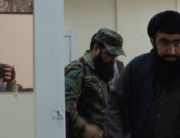
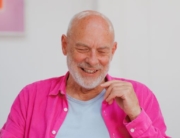
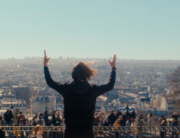
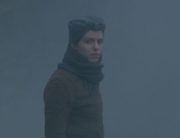
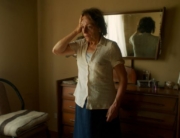
Leave A Comment